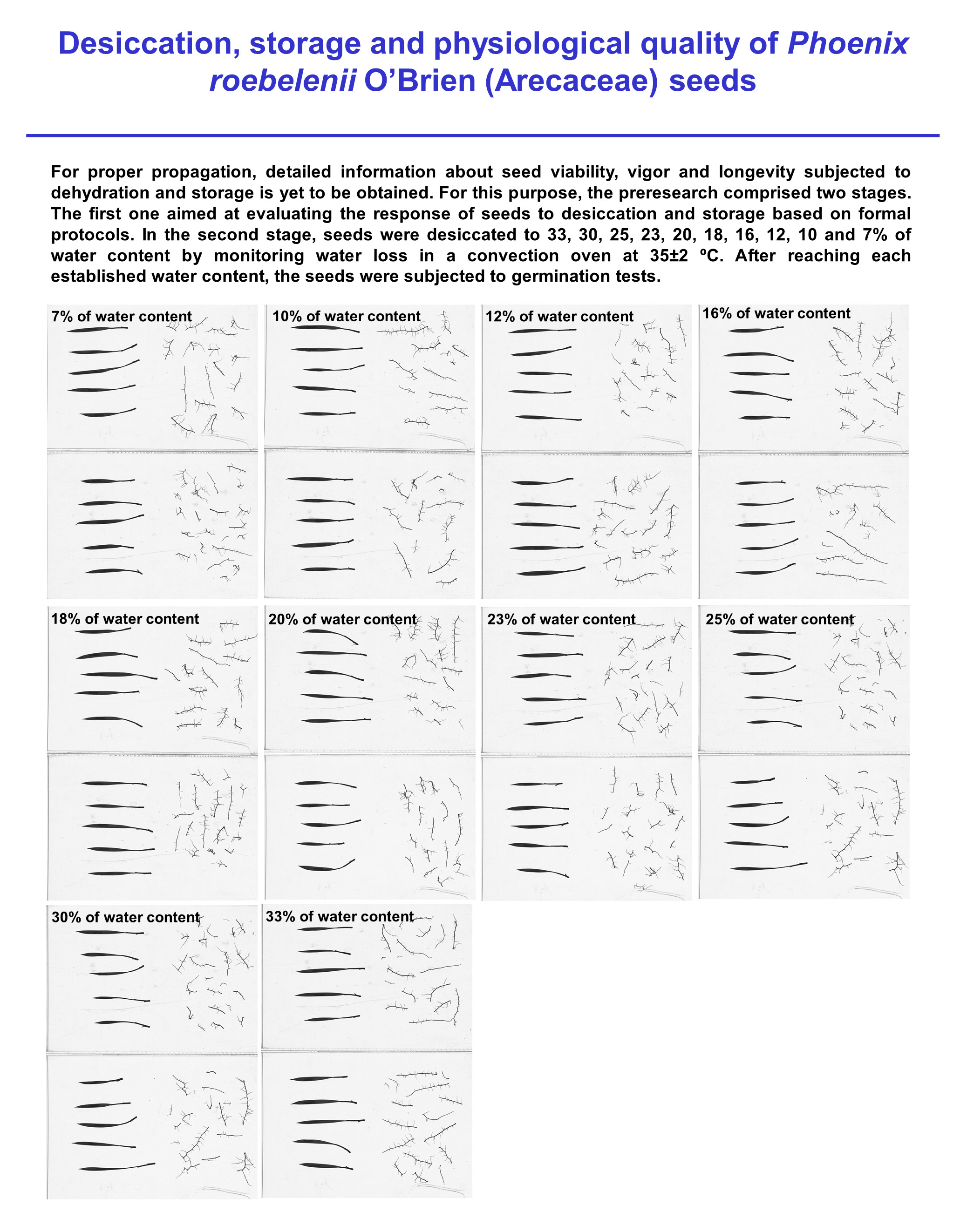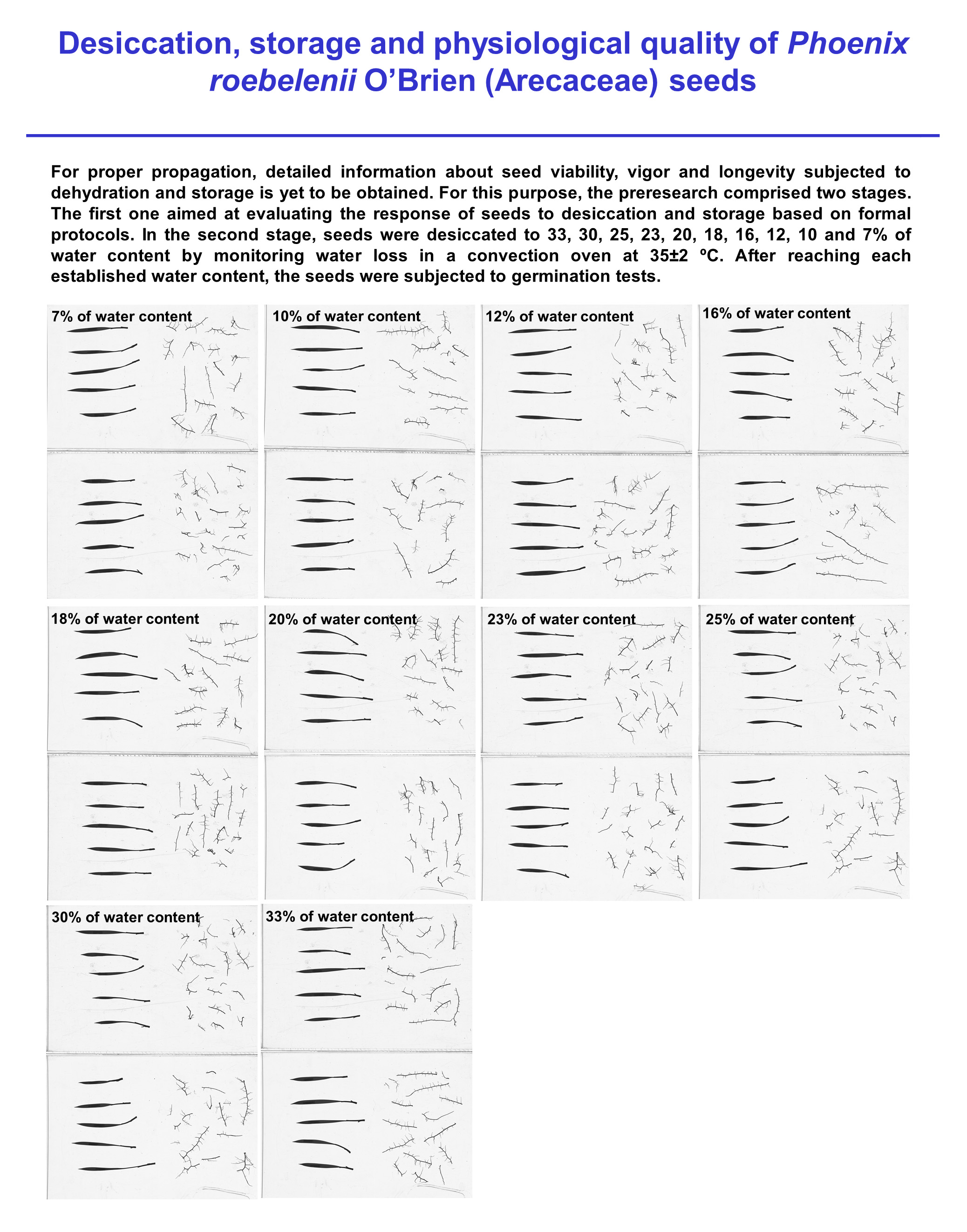Desiccation, storage and physiological quality of Phoenix roebelenii O’Brien (Arecaceae) seeds
DOI:
https://doi.org/10.48162/rev.39.062Keywords:
palm tree, Arecaceae, seed water content, vigor, viabilityAbstract

Phoenix roebelenii is a palm species widely used in Brazil due to its exuberant leaves and adaptability to different climatic variations. For proper propagation, detailed information about seed viability, vigor and longevity subjected to dehydration and storage is yet to be obtained. For this purpose, the present research comprised two stages. The first one aimed at evaluating the response of seeds to desiccation and storage based on formal protocols. In the second stage, seeds were desiccated to 33, 30, 25, 23, 20, 18, 16, 12, 10 and 7% of water content by monitoring water loss in a convection oven at 35±2°C. After reaching each established water content, the seeds were subjected to germination tests. At 65 days after sowing, root length, root area, volume and diameter, shoot and eophyll length, and total seedling fresh and dry weights, were measured. Significant increases in germination and eophyll length were observed for lower seed water contents. Aversely, collar diameter decreased with seed desiccation.
Highlights:
- Phoenix roebelenii seeds are orthodox.
- Reduced seed water content increased the percentage of germination, the germination speed index, and eophyll length of Phoenix roebelenii seedlings.
- Significant increases in germination and eophyll length were observed for lower seed water contents.
- Aversely, collar diameter decreased with seed desiccation.

Downloads
Published
Issue
Section
License
Copyright (c) 2018 Revista de la Facultad de Ciencias Agrarias UNCuyo

This work is licensed under a Creative Commons Attribution-NonCommercial-ShareAlike 3.0 Unported License.
Aquellos autores/as que tengan publicaciones con esta revista, aceptan las Políticas Editoriales.


